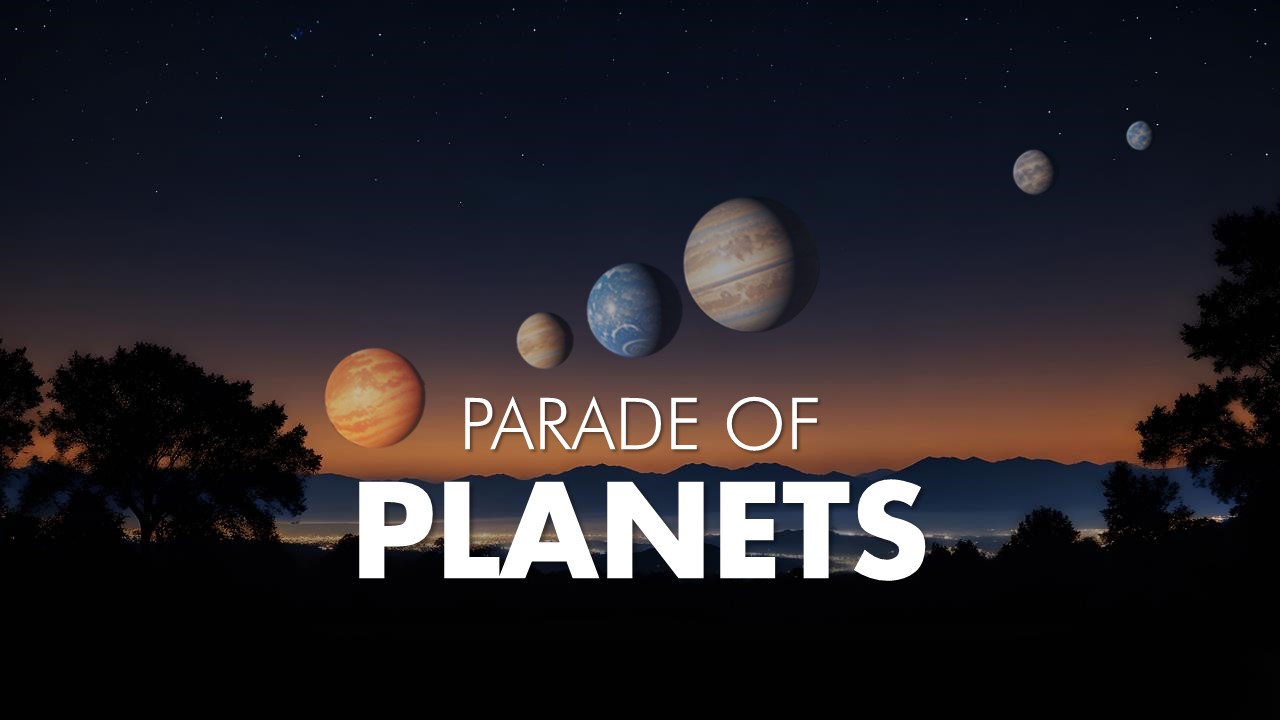Explore the Wonders of the "Parade of Planets" — A Global Guide to Celestial Events
Dive into the mesmerizing phenomenon of planetary alignments, their scientific significance, historical impact, and tips for observing these celestial marvels. Stay updated on upcoming events!

Planetary alignments, often called the "Parade of Planets," are awe-inspiring celestial events that capture the imagination of people worldwide. These rare occurrences, where multiple planets line up in the sky, have intrigued humans for centuries. This article will explore the science, history, and ways to observe these magnificent phenomena.
A "Parade of Planets" happens when several planets appear close together in the sky, forming a line. While they don't physically align in space, their orbits make them appear so from Earth's perspective. These events are a visual treat and a reminder of the vastness and beauty of our solar system.
In 2024, skywatchers witnessed a stunning alignment of Jupiter, Mercury, and Venus. On the 25th day of January 2025, an exciting parade involving Mars, Saturn, and Venus is expected. Mark your calendars and prepare for an unforgettable stargazing experience.
Planetary alignments occur due to the predictable orbits of planets around the Sun. As they move, there are times when their positions line up in a straight line or close to it relative to Earth. Such alignments are rare because planets orbit from the Sun at different speeds and distances.
Throughout history, planetary alignments have been seen as omens or signs of significant events. Ancient civilizations like the Mayans and Babylonians studied these phenomena, often linking them to religious or cultural beliefs. These events also inspired early astronomers to develop tools and methods for studying the skies.
Find a dark location with minimal light pollution to observe a planetary alignment. Use a smartphone app like SkySafari or Stellarium to identify planets and track their movement. A telescope can enhance your experience, but many alignments are visible to the naked eye.
Astrology assigns symbolic meanings to planetary alignments, claiming they influence human behavior and world events. While such interpretations lack scientific backing, they add a layer of cultural fascination to these events.
Planetary alignments offer valuable opportunities for space missions. For instance, the Voyager spacecraft used gravity assists from aligned planets to travel further into space. Studying alignments also helps refine our understanding of celestial mechanics.
One of the most famous alignments occurred in 1962, involving all five visible planets. This event sparked global interest and inspired countless stargazers to explore the night sky. Such moments continue to drive curiosity and innovation in astronomy.
Capturing these events requires basic equipment like a DSLR camera and a tripod. Use a wide-angle lens to include the horizon and planets. Experiment with exposure settings to balance light and highlight the planets against the dark sky.
Social media platforms have popularized celestial events like planetary alignments. Stunning images and educational content shared online make these phenomena accessible to a broader audience, sparking interest in astronomy.
For those eager to learn more, consider joining local astronomy clubs or exploring resources from organizations like NASA and the International Astronomical Union. Books, apps, and online forums are excellent tools for budding stargazers.
The "Parade of Planets" is a breathtaking reminder of the beauty and complexity of our universe. Observing and understanding these events connects us with a long history of human curiosity and exploration. Don’t miss your chance to witness the next alignment—it's a moment you'll remember for a lifetime.
What's Your Reaction?













































































































